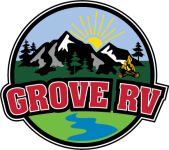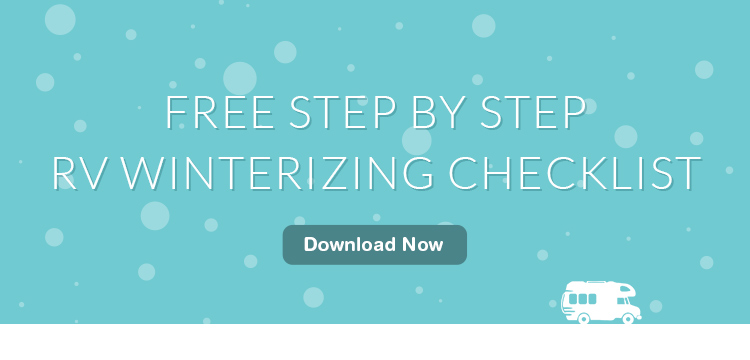Summer is right around the corner and RV season is about to get into full swing… getting your RV ready for the season is most likely on your mind.
If you’ve got a newer RV, your RV summer maintenance checklist will hopefully be a little shorter and easier. Older RVs, just by virtue of their age, will require closer attention to detail. Of course, if you have a Class A, Class B or Class C motorhome, you’ll have to pay attention to the motor and running gear as well.
Grove RV is happy to provide this list of the things you’ll want to check to ensure your RV is ready for summer:
Pests – Did any creatures make a home in your RV for the winter, such as bees or ants? Mice can often be a problem as it’s hard to resist a warmer and dry RV shelter for the winter! Luckily snakes aren’t usually a problem in Alberta.
Water leaks – Water is one of the big RV enemies, especially in Alberta where icy winters work to destroy it. Make sure to check all your caulking around windows, doors, roof, vents and any seams. Check inside to see if there’s any evidence of leak. Then wash your RV and check again. If there are any gaps, cracks, etc., use the appropriate sealant for that area.
Tires & brakes – Check your tires for cracks and the correct tire pressure. Don’t forget the spare! Do the brakes work? Squealing or pulling when brakes are applied could indicate a problem. Also remember to check your brake and signal lights.
Fire Safety – Check your carbon monoxide detector and smoke detectors – make sure to replace the batteries and test them. It’s a good time to look at the fire extinguisher – make sure it’s full, unclogged, in the location that it is supposed to be and that the pressure is in the operable range.
Water – On your first water tank fill you’ll need to get the air out of your lines and run the taps until any antifreeze is out. Inspect everything for leaks (don’t forget to check the water heater drain plug). Once that’s all done, add fresh water to your main tank after flushing it and sanitizing it.
Propane – Check connections for leaks using soapy water and a leak detector inside your RV. No, matches should not be used to check for leaks!
Stove/furnace – Once you’re sure there are no propane leaks in your RV, Fire up the stove and furnace, but before you do, make sure there are no clogs, spider webs, etc.
Batteries – Check that your RV batteries are fully charged, that the connections are solid and that there is no corrosion on the terminals. Fluid levels on the batteries should be checked – you may need to add distilled water to bring the fluid level up.
Generator – Make sure you’ve got fresh fuel and change the oil if necessary. If you have an air filter and fuel filter, make sure they’re okay. Change them if necessary. You can run it for a couple of hours with at least a 50% load (and this would also be a good time to check out your air conditioner).
A/C unit – When you’re checking the generator, start up you’re air conditioning unit after ensuring it’s clean and free of debris (particularly the condenser fins and coils). Make sure the air filter is clean, and once it’s started up, ensure that it is cooling properly. Once the A/C unit is operating, ensure that the drain pan hose is not blocked.
Dump hoses – You definitely don’t want to be out on the road at a dump station and discover your dump hoses are in need of repair or replacement. Check them thoroughly to make sure there are no cracks, tears or holes.
Waste tank valves – In conjunction with checking your dump hoses, test your waste tank valves to ensure they’re working. You could do it at home, provided they’re empty! Or, take your RV to the nearest dump station and check them there, assuming your dump hoses are okay.
Awnings – Open and inspect your awnings to make sure there are no rips or tears that might get worse later. They can really take a beating, so it’s easier to repair them at home. You should definitely have RV awning repair tape as part of your tool kit on the road. If you need to repair them, matching awning material can be glued to the canvas. Ensure you’re using water resistant glue that works outdoors. Also, you can gently wash your awning if there is any dirt, mold or mildew. Use the recommended cleaner for your awning.
Engine – Before you start it up (if applicable), make sure your battery is charged, and check the oil and air filter, as well as the belts. If it’s a diesel, make sure your fuel filter is in good shape. Start it up and make sure everything is running properly.
Insurance – Make sure your RV insurance is up to date and that you have all the required paperwork in your RV. Check your plates and date stickers too.
Maintenance schedule – Check the manual to see what maintenance is needed, and make sure it gets done. This would be a good time to check for any recalls on your particular unit.
Towing gear – Inspect it to ensure it’s in good condition? How are the hitch, ball, tow bar, brakes and chains? Inspect for cracks and anything that could cause a problem out on the road.
Finally, if you haven’t driven your RV since the fall, it would be a good time to think about driving safety and to do a practice run before heading out on holidays, whether you’re new to the RV world, or a veteran.
We hope you’ve found our tips for getting your RV ready for summer useful! If you have any tips to share, please let us know.
We’re here to help. If you’re in need of RV parts or accessories, or an RV repair or service, feel free to contact us.


